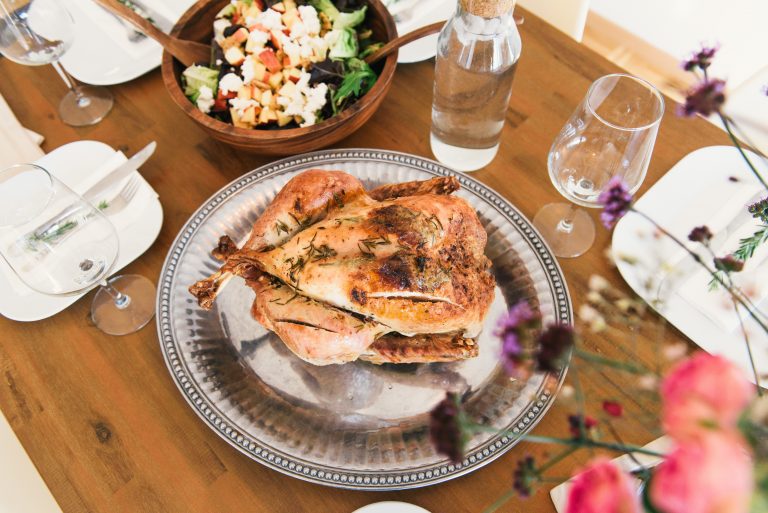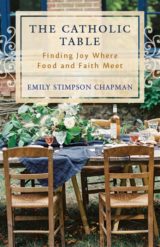By Emily Stimpson Chapman
Emily Stimpson Chapman is the award-winning author of several books, including The Catholic Table: Finding Joy Where Food and Faith Meet. She is also the host of the video study of the same name, The Catholic Table.

Cooking for any holiday is work. Just ask any host who prepares Christmas dinner. All good feasts worth their salt require hours, if not days, in the kitchen peeling, chopping, stirring, roasting. They also require weeks of planning, shopping, cleaning, setting the table, and decking the halls. If that’s true today (and trust me, it is), when fancy gas ovens, KitchenAid mixers, and Breville food processors do half the work for us, imagine what Easter breakfast required in a world without electricity!
Nevertheless, despite all that feasting requires, Christian women and men still have logged countless hours in the kitchen, year after year, preparing feast after feast. And many—or at least some—have logged those hours without complaint. Quite a few even have logged the hours with joy. Their work has been made lighter by the reason behind it: the Bridegroom is coming.
On Easter, on Christmas, on every Sunday of the year, that’s what we celebrate. We celebrate him. We celebrate with him. We feast with Jesus Christ and all of heaven, rejoicing in God’s life, God’s love, and God’s great gift of himself to us.
And yes, we celebrate those truths in church. We celebrate them with liturgy and song and smoky incense that rises up to heaven like a prayer. But that’s not enough. It’s never been enough for a sacramental people.
Every day, on every altar, the Bridegroom becomes heavenly food for us. As such, making our joy in his love and life incarnate through earthly food is the most natural thing in the world. To pour our time, our energy, our creativity, and our money into preparing special foods on special feasts is simply to imitate him who provides us with the most special feast of all.
Moreover, because he gave us his best, on feast days we give him our best—not Queen Elizabeth’s best, but the best our humble selves can manage. For one person, that might mean a five-course meal for twenty. For someone else, that might mean stirring a bit of meat into a simple soup or stew. For most Catholics, it’s almost always meant pouring wine, beer, or some special drink that stirs the soul to merriment. And it’s also almost always meant doing something good with sugar. Because what’s a feast day without dessert?
It’s not just the food that makes a feast special, though. It’s also how we serve it. It’s me whipping out my silver. It’s you leaving the paper plates in the cupboard and eating off Grandma’s china instead. It’s lighting candles, using real napkins, real glassware, and sitting everyone down around the dining room table, cleared (for the occasion) of homework, papers, and bills. It’s taking five extra minutes, if that’s all we can spare, to try to make manifest at our tables the beauty and wonder of the mystery we’re celebrating. On feast days, the Church outfits the altars and her priests with special cloths, vestments, and floral arrangements. We just follow her lead when we outfit the domestic church with the best our china cabinets and linen closets have to offer.
More important than any fancy foods or fancy dishes, however, are the people doing the feasting. While minor feast days don’t require a crowd (an extra piece of chocolate after lunch will suffice), the major feasts do. The marriage supper of the Lamb is not supper for one, and Christmas Dinner isn’t meant to be eaten alone. Both are meals to share with friends, neighbors, extended family members, and lonely souls in need of a dinner invitation. The Communion of Saints feasting in heaven is a dinner crowd without number. Welcoming others to feast with us images that heavenly feast. It enlivens it and enriches it with laughter, conversation, and friendship. In that it reminds us that ultimately, we’re called to more than a feast: we’re called to communion.
You Might Also Like

Every one of us has to eat. Some of us eat too much food. Or we eat too little. Sometimes we eat without gratitude, without charity, or without respect. But, as award-winning author Emily Stimpson Chapman explains in The Catholic Table, with a sacramental worldview, the supernatural gift of God’s grace can transform and heal us through the food we make, eat, and share.

